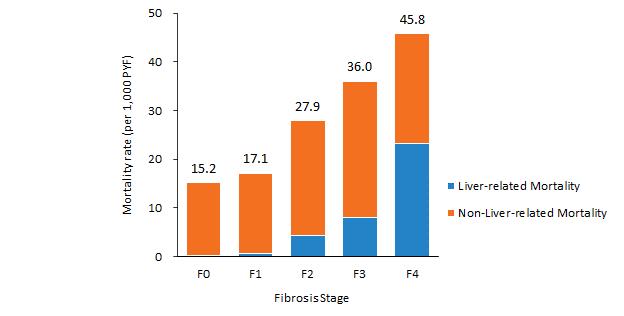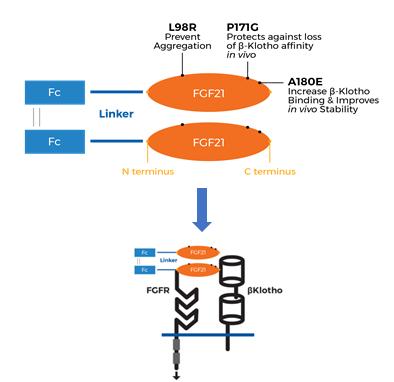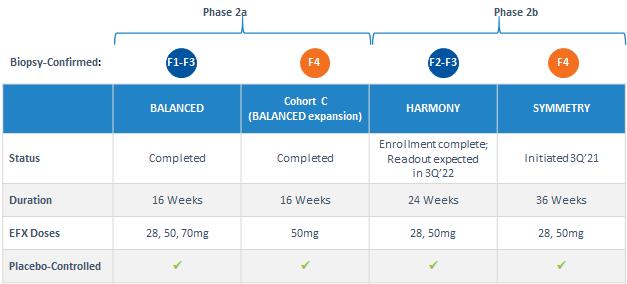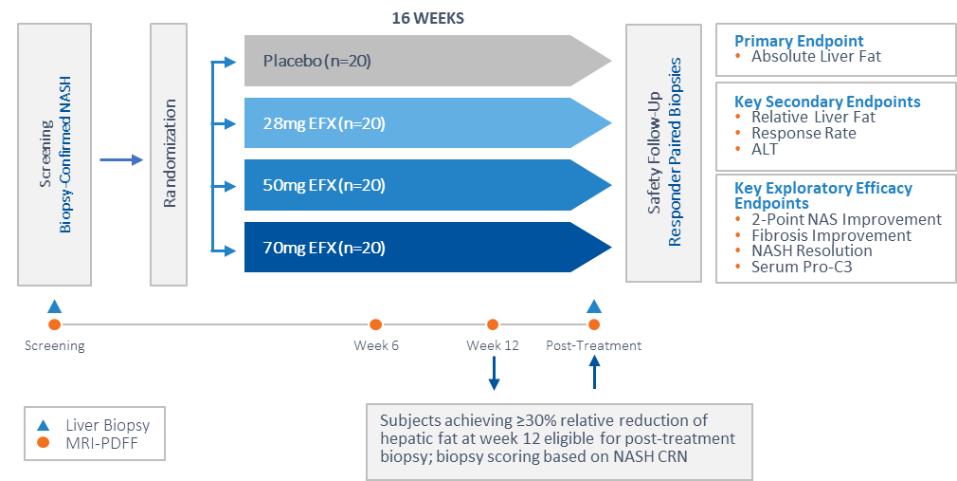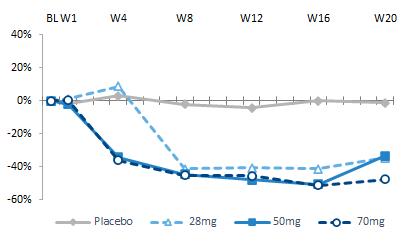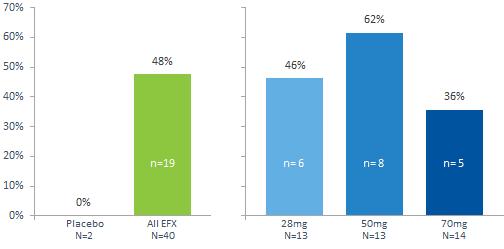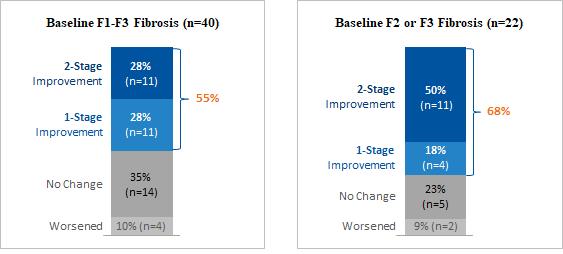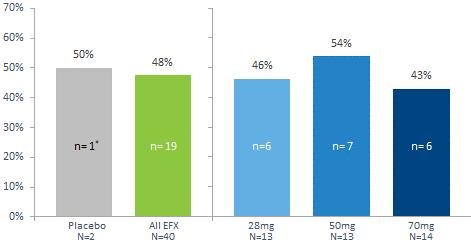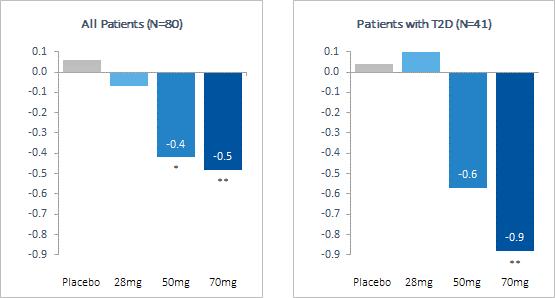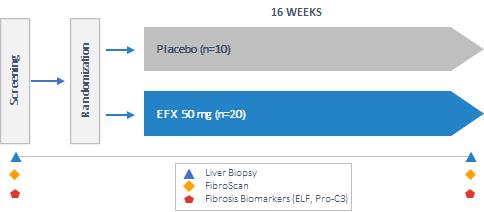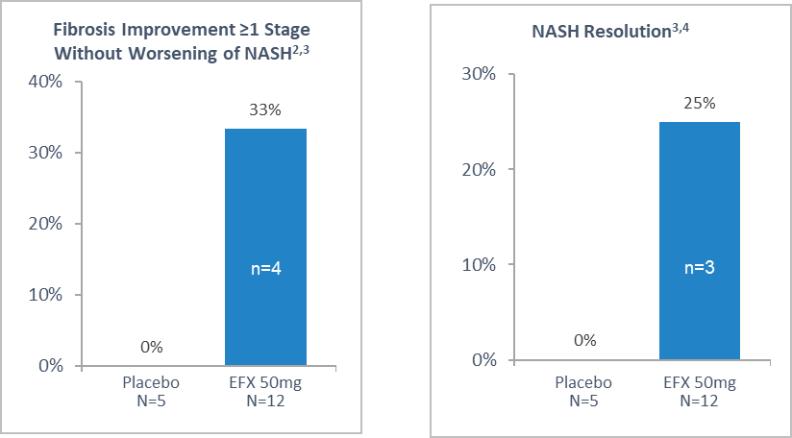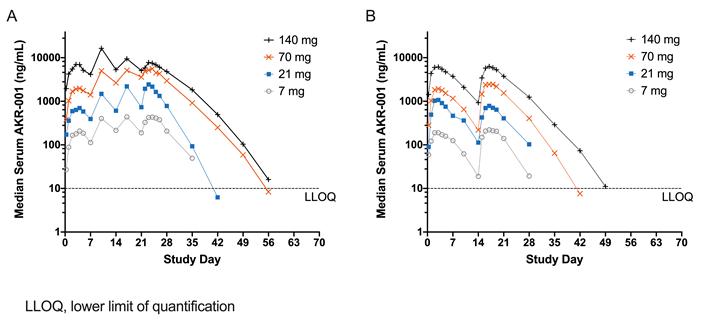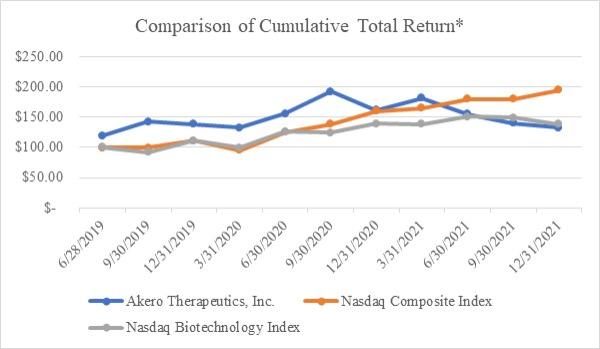Sales and marketing
Successful marketing of a new drug for the treatment of NASH will require a targeted commercial infrastructure. We expect to begin making plans for commercialization following in parallel with our ongoing HARMONY and SYMMETRY studies. We have also contracted with a third-party manufacturer, Vetter, to support clinical development and the potential commercialization of EFX with commercial-scale manufacturing. We intend to develop the commercial infrastructure required for bringing EFX to patients in the United States, if approved, in parallel with an anticipated Phase 3 clinical trial. We also plan to evaluate options for delivering EFX, if approved, to patients in other key markets, such as Europe, Japan and China, which may include strategic collaborations.
Competition
The biotechnology industry is intensely competitive and subject to rapid and significant technological change. Our competitors include multinational pharmaceutical companies, specialized biotechnology companies and universities and other research institutions.
We understand that a number of pharmaceutical companies, including AbbVie, Inc., AstraZeneca PLC/MedImmune LLC, Boehringer Ingelheim AG, Bristol-Myers Squibb Company, Inc., Eisai, Inc., Eli Lilly and Company, Johnson & Johnson, Merck & Co., Inc., Novartis Pharmaceuticals Corporation, Novo Nordisk A/S, Pfizer Inc., Roche Holding AG, Sanofi and Takeda Pharmaceutical Company Limited, as well as large and small biotechnology companies such as Albireo Pharma, Inc., Alnylam Pharmaceuticals, Inc., Altimmune, Inc., Amgen, Inc., Arrowhead Pharmaceuticals, Inc., Axcella Health, Inc., Boston Pharmaceuticals, Inc., Cirius Therapeutics, Inc., CohBar, Inc., CymaBay Therapeutics, Inc., 89bio, D&D Pharmatech, Inc., Enanta Pharmaceuticals, Inc., Galectin Therapeutics Inc., Galmed Pharmaceuticals Ltd., Gilead Sciences, Inc., Hanmi Pharmaceutical Company, Ltd., Intercept Pharmaceuticals, Inc., Inventiva Pharma SA, Ionics Pharmaceuticals, Inc., Madrigal Pharmaceuticals, Inc., MediciNova, Inc., North Sea Pharmaceuticals, Poxel SA, Sagimet Biosciences, Inc., Terns Pharmaceuticals, Inc. and Viking Therapeutics, Inc. are or may be pursuing the development or marketing of pharmaceuticals that target NASH. It is also probable that the number of companies seeking to develop products and therapies for the treatment of serious metabolic diseases, such as NASH, will increase. Many of our competitors have substantially greater financial, technical, human and other resources than we do and may be better equipped to develop, manufacture and market technologically superior products. In addition, many of these competitors have significantly greater experience than we have in undertaking nonclinical studies and human clinical trials of new pharmaceutical products and in obtaining regulatory approvals of human therapeutic products. Accordingly, our competitors may succeed in obtaining FDA approval for superior products. Many of our competitors have established distribution channels for the commercialization of their products, whereas we have no such channel or capabilities. In addition, many competitors have greater name recognition and more extensive collaborative relationships. Smaller and earlier-stage companies may also prove to be significant competitors, particularly through collaborative arrangements with large, established companies.
Our competitors may obtain regulatory approval of their products more rapidly than we do or may obtain patent protection or other intellectual property rights that limit our ability to develop or commercialize our product candidate or any future product candidates. Our competitors may also develop drugs that are more effective, more convenient, more widely used and less costly or have a better safety profile than our products and these competitors may also be more successful than we are in manufacturing and marketing their products. If we are unable to compete effectively against these companies, then we may not be able to commercialize our product candidate or any future product candidates or achieve a competitive position in the market. This would adversely affect our ability to generate revenue. Our competitors also compete with us in recruiting and retaining qualified scientific, management and commercial personnel, establishing clinical trial sites and patient registration for clinical trials, as well as in acquiring technologies complementary to, or necessary for, our programs.
Government Regulation
The FDA and other regulatory authorities at federal, state, and local levels, as well as in foreign countries, extensively regulate, among other things, the research, development, testing, manufacture, quality control, import, export, safety, effectiveness, labeling, packaging, storage, distribution, record keeping, approval, advertising, promotion,

